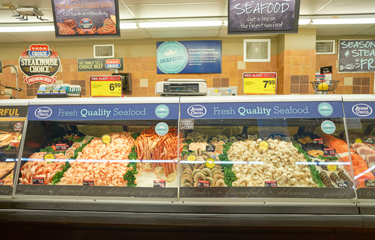US fresh, frozen seafood retail sales set records in 2021

Sales of frozen and fresh seafood in the U.S. hit all-time highs in 2021, primarily driven by inflation.
Retail seafood sales hit new highs in 2020 due to COVID-19 pandemic buying sprees and more consumers eating at home, but 2021’s sales totals eclipsed the previous year, IRI and 210 Analytics said in a new report. Fresh seafood sales rose 4 percent compared to 2020 and 30.8 percent versus 2019, reaching USD 7.1 billion (EUR 6.3 billion). Frozen seafood sales rose 2.8 percent compared to 2020 and 40.8 percent versus 2019, reach USD 7.2 billion (EUR 6.4 billion).
“Fresh and frozen seafood retail sales reached new records in 2021, boosted by robust demand as well as inflation,” 210 Analytics Principal Anne-Marie Roerink told SeafoodSource.
Fresh finfish sales climbed 6.4 percent in 2021 versus 2020 and soared 25.5 percent versus 2019. Fresh shellfish sales rose 0.5 percent versus 2020 and 37.6 percent versus 2019. In the frozen arena, the biggest sales gains were in frozen raw shrimp, which rose 7 percent versus 2020 and nearly 60 percent versus 2019. Frozen seafood sales climbed 2.2 percent versus 2020 and 40 percent versus 2019.
Frozen cooked shrimp sales actually declined 1.7 percent compared to 2020, but soared 24.2 percent versus 2019.
While frozen seafood remains the largest seafood category in terms of dollar sales, units declined 1.6 percent versus 2020 and volume dropped 2.9 percent.
Ambient seafood sales declined 11.4 percent in 2021, due to inflation and the comparison with the pandemic buying spree. However, the category still produced USD 2.5 billion (EUR 2.2 billion) in sales for the year. Consumers have always seen canned seafood as a cost-effective, good-to-have-on hand item, Roerink said.
“We have to remember that canned seafood was one of the biggest stories early on in the pandemic. March, April, and May of 2020 had such giant peaks that it was simply impossible for canned seafood to come anywhere near those,” Roerink said. “Then, demand started to soften a bit in the latter half of 2020, so it also becomes easier for the latter half of 2021 to grow.”
Inflation continues to be a major issue impacting all types of seafood sales and volume.
"In today’s marketplace, where inflation is the highest in 40 years, we see shifting to items that help stretch the dollar and items that are more cost effective and canned seafood certainly fits that bill,” she said.
The consumer price index increased 6.8 percent for the 12 months ending November 2021, its highest since June 1982, according to the Bureau of Labor Statistics, IRI noted. In December 2021, the average price per unit across all food and beverage sales was up 8.3 percent versus December 2020
“Much like the rest of the store, prices for seafood rose far above the typical rate of inflation, in particular fresh with finfish prices … up 8 percent versus 2020,” Roerink said.
Fresh seafood prices increased 6.8 percent in 2021 and dollar sales increased 1.8 percent.
“In other words, robust demand got fresh seafood very close to the ‘new record’ finish line and inflation pushed it to new records,” Roerink said.
Frozen seafood prices rose 4.2 percent per unit and 5.7 percent per volume for the year. Shelf-stable had the lowest increases, with units rising 2.3 percent and volume prices increasing by 1.4 percent, Roerink said.
Photo courtesy of Sorbis/Shutterstock






Share